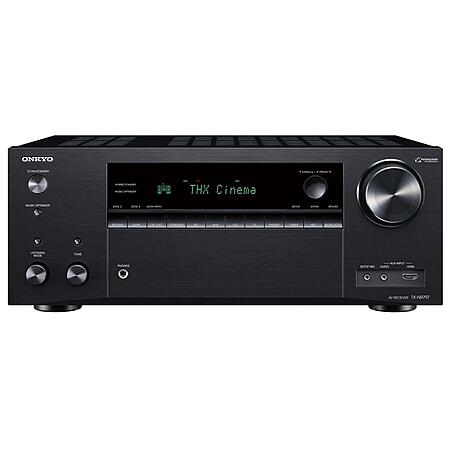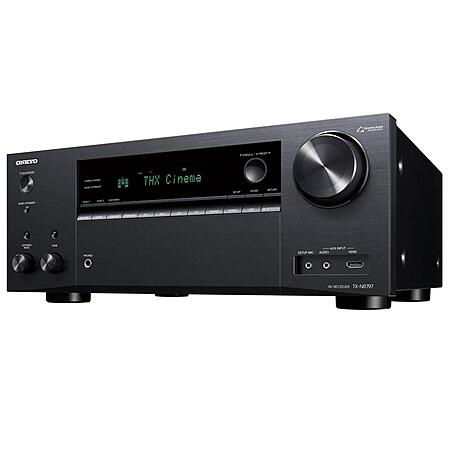expirediconian | Staff posted Jul 26, 2024 10:50 PM
Item 1 of 2
Item 1 of 2
expirediconian | Staff posted Jul 26, 2024 10:50 PM
Onkyo TX-NR797 9.2-Channel Network A/V Receiver
+ Free Shipping$379
$799
52% offAdorama
Visit AdoramaGood Deal
Bad Deal
Save
Share







Leave a Comment
Top Comments
42 Comments
Sign up for a Slickdeals account to remove this ad.
Higher end systems will use the receiver as a "signal processor", connect the pre-outs to a dedicated, higher powered amp. Dedicated amps will generally have better specs and be able to push their power with all channels driven.
For most home use cases, it's overkill. I wouldn't mind the upgrade, but I have some DIY speakers that really open up when driven with some extra power. My old Pioneer is still doing fine, but my next AVR will have pre-outs so I have an upgrade path.
Pre-out = pre amplification or pre amp.
Lot's of abbreviations thrown around with little explanation. There is consumer pre of .775v and then there is commercial pre or 2v+.
For the most part it can be interchanged and swapped around, but sometimes you need that extra drive to get the signal strong enough. In which case there are adapter and converters galore. But the best practice is to always match like kind with like kind..... Prosumer with pro gear, consumer with, well, consumer gear. And pay no attention to the "pro" anymore as it has been beaten to death by the populous and is now a completely meaningless prefix!
The day they put PRO on a dumb phone is the day it truly became meaningless! But the truth is we already know it happened before that.... I digress.
But do pay attention to the voltage! The numbers will tell you more than any word ever could. The numbers can always be mixed and matched with the right transformer or connector otherwise. It's only complicated until you learn it 😁.
Also has a line out for zone 2
Separate qualify amplifiers literally last for decades. Pretty much the only thing which ages out are the capacitors, which generally are fairly easy to replace.
Higher end systems will use the receiver as a "signal processor", connect the pre-outs to a dedicated, higher powered amp. Dedicated amps will generally have better specs and be able to push their power with all channels driven.
For most home use cases, it's overkill. I wouldn't mind the upgrade, but I have some DIY speakers that really open up when driven with some extra power. My old Pioneer is still doing fine, but my next AVR will have pre-outs so I have an upgrade path.
Sign up for a Slickdeals account to remove this ad.
Pre-out = pre amplification or pre amp.
Lot's of abbreviations thrown around with little explanation. There is consumer pre of .775v and then there is commercial pre or 2v+.
For the most part it can be interchanged and swapped around, but sometimes you need that extra drive to get the signal strong enough. In which case there are adapter and converters galore. But the best practice is to always match like kind with like kind..... Prosumer with pro gear, consumer with, well, consumer gear. And pay no attention to the "pro" anymore as it has been beaten to death by the populous and is now a completely meaningless prefix!
The day they put PRO on a dumb phone is the day it truly became meaningless! But the truth is we already know it happened before that.... I digress.
But do pay attention to the voltage! The numbers will tell you more than any word ever could. The numbers can always be mixed and matched with the right transformer or connector otherwise. It's only complicated until you learn it 😁.
You also have to be careful when matching the AVR w/the amp. An AVR that outputs <2V from the pre-outs typically needs a high-gain amplifier (i.e. more powerful). AVR bench tests and amp specs will give you this info!
Sign up for a Slickdeals account to remove this ad.
Leave a Comment